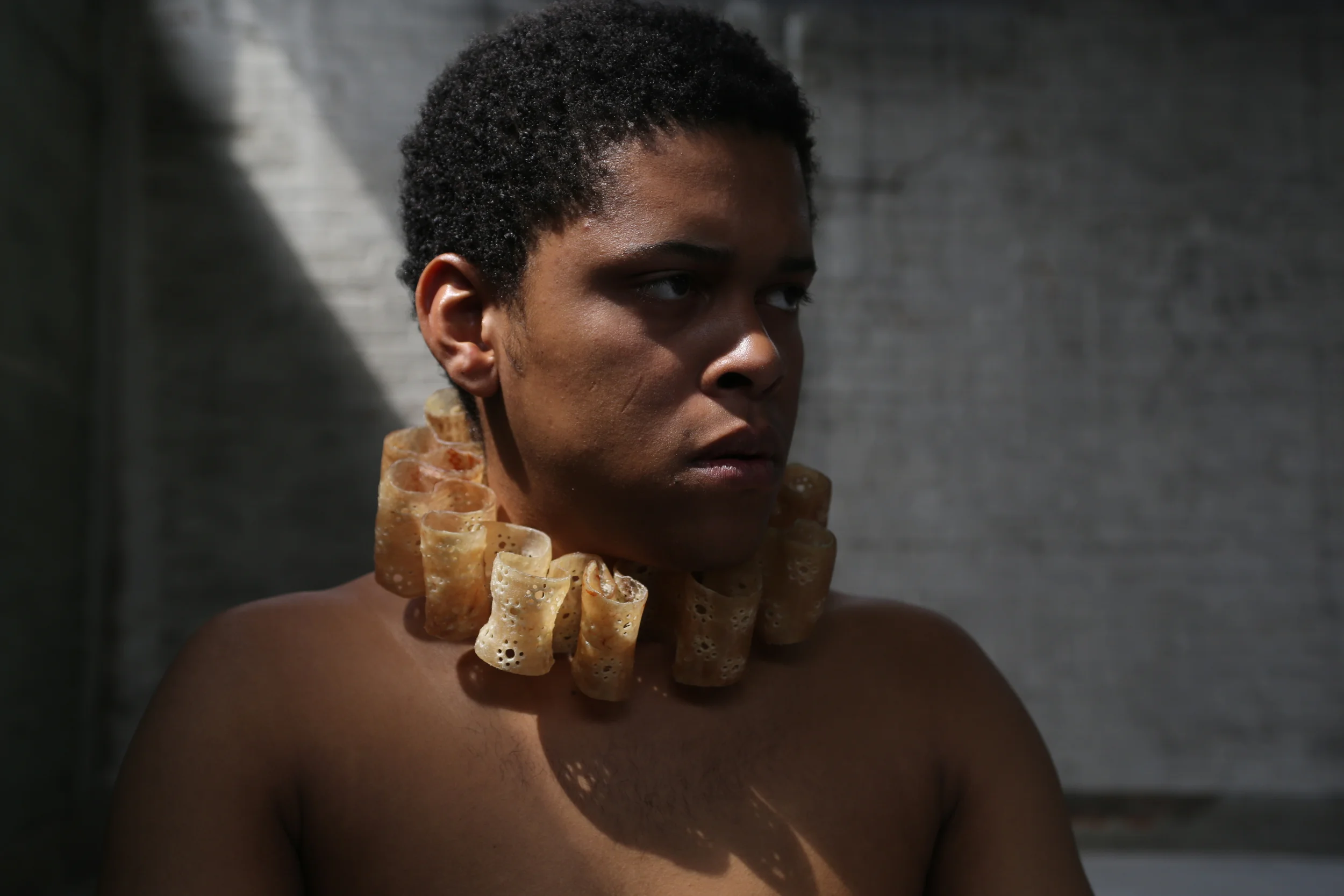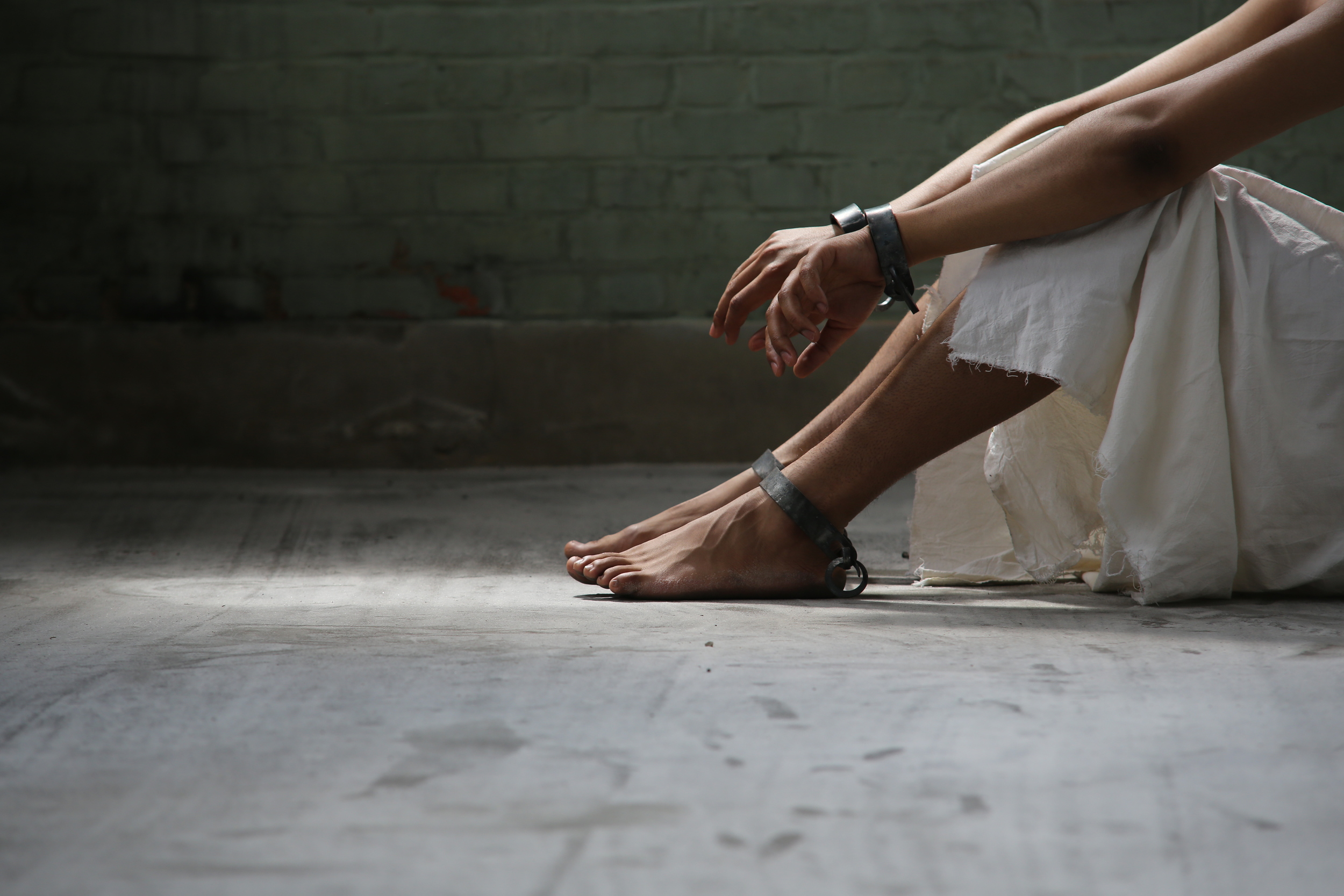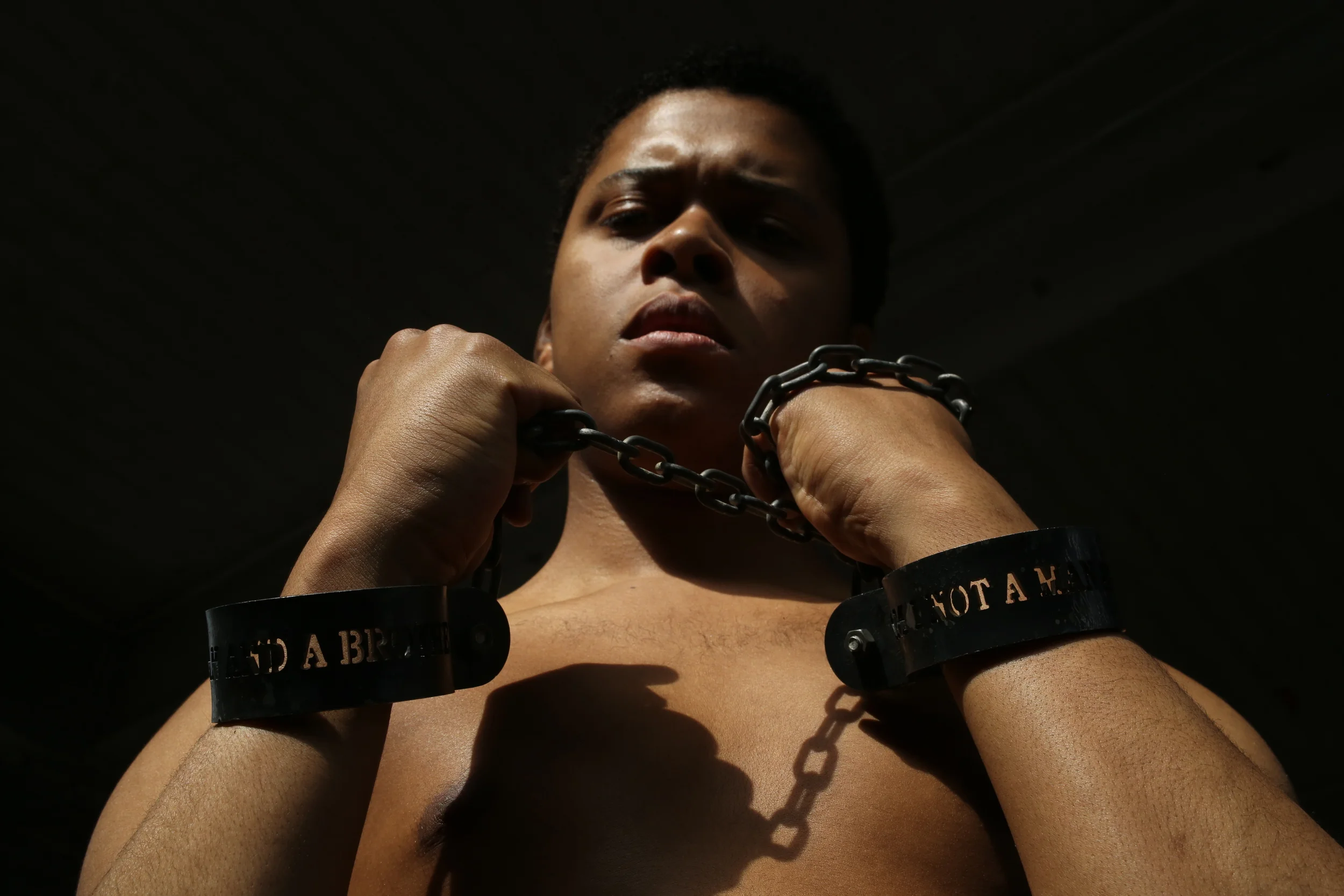Wim Ibens 2014
Silver wire ring, chicken beaks
At first glance this looks like a wire ring with an ornamental flower. The fragile leaves look like honeysuckle but actually are 4 carefully positioned chicken beaks.
This piece won the prestigious Wim Ibens award 2014, the Belgian bi-annual price for Jewelry Design.

AVAILABLE NOW!

Am I not a woman and a sister?
Graduation collection jewelry design at the Royal Academy of Fine Arts Antwerp (June 2014)
The 19th century abolitionist slogan gives away the subject of Ruth Felter’s graduation collection: Slavery
Photography is by Caro Leriche.
© 2014 Ruth Felter







